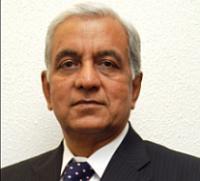 | « Back to article | Print this article |
Given the constrains faced by the FM worked while rolling out this budget - slowing growth, stubborn inflation, high fiscal and current account deficit, dwindling domestic saving and investment rates, to name a few - the budget seems to be the best that could be done in a bad situation. He rightly pointed out the fact that CAD is a larger concern than Fiscal deficit. The FM has managed to lay down a game plan to Reign fiscal deficit (to 4.8 per cent by FY14 as against 5.2 per cent now) and thereby avert large crowing out of private spending (especially on investment) and a credit rating downgrade.
The FM has managed to lay down a game plan to Reign fiscal deficit (to 4.8 per cent by FY14 as against 5.2 per cent now) and thereby avert large crowing out of private spending (especially on investment) and a credit rating downgrade.
At the same time there has been a move to stay away from a populist budget in the run-up to the next general election. Direct Benefit Transfer and food securities bill remains the main plank for “pro-people” measures, without any major increase in outlay.
The budgetary layout was Rs 16.65 lakh crore (Rs 16.65 trillion) and hinted out at a food subsidy bill of Rs 90,000 crore (Rs 900 billion).
The focus has been on to induce investment, especially large investment, and also financial savings, improve education and skill formation.
While some of the budget numbers are already being questioned, we do not as yet see any large anomaly. Comparison between the FY13 revised and FY14 budget estimates seems to be creating the confusion as the FY13 revised numbers have been scaled down substantially from the FY13 budget estimate numbers (especially for planned and capital spending).
The common man (or rather the rich common man)